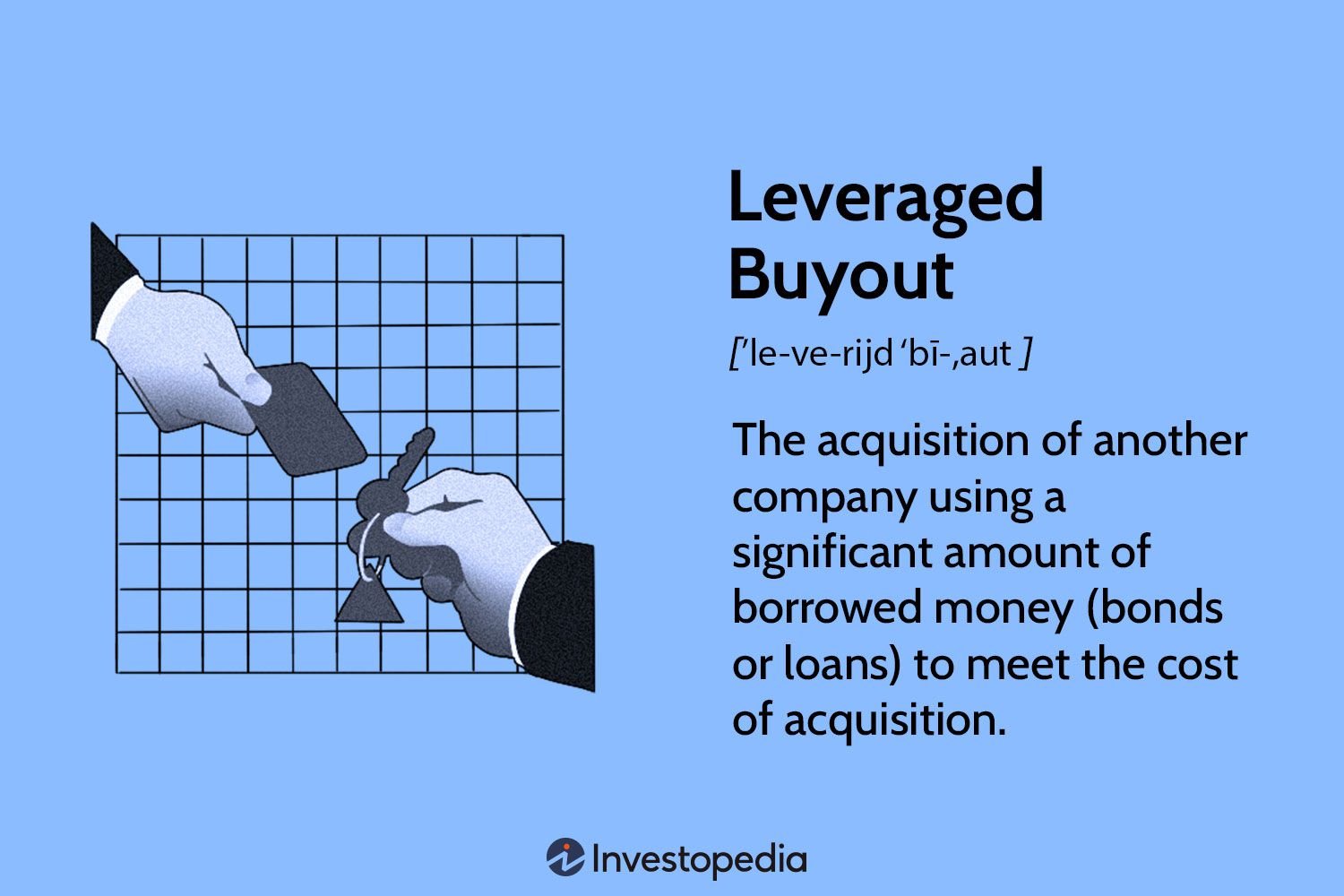Are you curious about what leveraged buyout in corporate finance entails? Look no further! In simple terms, a leveraged buyout (LBO) is a financial strategy where a company is acquired using a significant amount of borrowed money, often with the intention of turning it into a profitable venture. This powerful tactic allows investors to maximize their potential returns by utilizing debt to finance the acquisition. So, how exactly does this work? Let’s delve into the fascinating world of leveraged buyouts and explore its inner workings.
What is a Leveraged Buyout in Corporate Finance?
A leveraged buyout (LBO) is a financial strategy that involves the acquisition of a company using a significant amount of debt. In a leveraged buyout, the buyer typically borrows a substantial portion of the purchase price from various sources such as banks, private equity firms, or other lending institutions. This borrowed money is used to finance the acquisition of the target company.
Leveraged buyouts gained popularity in the 1980s and have since become a common method of acquiring companies. They provide an opportunity for buyers to take control of a company without having to invest a large amount of their own capital upfront. The debt used to finance the acquisition is then repaid using the cash flows generated by the acquired company or through the sale of its assets.
Benefits of Leveraged Buyouts
Leveraged buyouts offer several potential benefits for both the buyer and the target company. Some of the key advantages include:
1. Financial Gain for Investors
Investors, especially private equity firms, often seek leveraged buyouts as a means to generate high returns on their capital. By leveraging debt, they can increase their potential financial gain significantly. If the acquired company performs well and generates strong cash flows, the investor’s return on investment can be substantial.
2. Enhanced Efficiency and Profitability
In many cases, the buyer of a company through a leveraged buyout aims to improve the target company’s efficiency and profitability. By injecting fresh capital and implementing strategic changes, such as cost-cutting measures, operational improvements, or new growth strategies, the buyer can transform the acquired company into a more profitable and successful enterprise.
3. Alignment of Interests
Leveraged buyouts often involve management teams or key executives of the target company participating in the acquisition. This helps align the interests of the management with the investors, as they become co-owners of the company alongside the buyer. This alignment of interests can drive motivation and collaboration, leading to better performance and a higher chance of success.
4. Opportunities for Restructuring
Leveraged buyouts can provide an opportunity to restructure the target company. This might involve divesting non-core assets, streamlining operations, or focusing on core competencies. Such restructuring efforts can result in a leaner and more agile organization, better equipped to compete in its industry and deliver long-term growth.
Risks and Challenges of Leveraged Buyouts
While leveraged buyouts offer potential benefits, they also come with inherent risks and challenges. It is important for buyers and investors to carefully evaluate these factors before pursuing an LBO. Some of the risks and challenges include:
1. High Levels of Debt
Leveraged buyouts involve taking on a substantial amount of debt. This debt must be serviced and repaid over time, which can put significant pressure on the cash flows of the acquired company. If the business underperforms or faces economic downturns, the burden of debt payments can become overwhelming, leading to financial distress or even bankruptcy.
2. Limited Financial Flexibility
Due to the high levels of debt, leveraged buyouts often result in limited financial flexibility for the acquired company. This can restrict its ability to pursue growth initiatives, invest in research and development, or adapt to market changes. The focus on debt repayment may impede necessary investments for long-term success.
3. Execution Risk
Executing a successful leveraged buyout requires careful planning, analysis, and execution. The buyer must accurately assess the target company’s financial health, growth prospects, and potential synergies. Any miscalculations or misjudgments can have significant negative consequences and result in a failed acquisition.
4. Market Conditions and Interest Rates
The availability of debt financing and interest rates can significantly impact the feasibility and success of leveraged buyouts. In times of economic uncertainty or high-interest rates, lenders may become more cautious, making it harder to secure favorable financing terms. Unfavorable market conditions can increase the overall risk and cost of the acquisition.
The Process of a Leveraged Buyout
The process of executing a leveraged buyout involves several stages and requires careful consideration of various factors. While the specifics may vary depending on the circumstances, a typical LBO process includes the following steps:
1. Identifying and Evaluating Target Companies
The buyer, often a private equity firm or a group of investors, identifies potential target companies suitable for a leveraged buyout. Factors such as industry attractiveness, growth potential, and financial performance are considered during the evaluation process.
2. Securing Financing
Once a target company is chosen, the buyer seeks financing from various sources. This includes negotiating with banks, private equity investors, or other lenders to secure the required debt financing. The terms of the financing, such as interest rates, repayment schedules, and covenants, are carefully negotiated.
3. Performing Due Diligence
Before finalizing the acquisition, the buyer conducts a thorough due diligence process. This involves analyzing the target company’s financial statements, operations, legal documents, and potential risks. The goal is to identify any potential issues or liabilities that could affect the value or feasibility of the acquisition.
4. Structuring the Deal
Based on the due diligence findings and negotiations with the target company’s management, the buyer structures the deal. This includes determining the purchase price, the equity contribution, and the debt-to-equity ratio. The structure is designed to optimize financial returns while managing risk.
5. Completing the Acquisition
Once the deal structure is finalized, the buyer completes the acquisition by acquiring the target company’s shares or assets. Legal documents, such as purchase agreements and financing agreements, are executed, and the necessary regulatory approvals are obtained.
6. Post-Acquisition Integration and Value Creation
After the acquisition, the buyer focuses on integrating the acquired company into its operations and implementing any planned changes or improvements. This may involve restructuring, cost-cutting, implementing new strategies, or expanding into new markets. The goal is to enhance the value of the acquired company and generate a solid return on investment.
Overall, a leveraged buyout can be a complex and strategic financial maneuver. It offers potential rewards for both the buyer and the acquired company if executed carefully and with a thorough understanding of the risks and challenges involved. By leveraging debt, buyers can unlock opportunities for growth, restructuring, and financial gain, while also transforming companies into more efficient and profitable entities.
Leveraged Buy Outs Explained Simply
Frequently Asked Questions
Frequently Asked Questions (FAQs)
What is a leveraged buyout in corporate finance?
A leveraged buyout (LBO) in corporate finance refers to the acquisition of a company using a significant amount of borrowed money. In an LBO, the acquiring party, often a private equity firm, uses a combination of equity and debt to purchase the target company. The company being acquired becomes responsible for repaying the debt used in the transaction.
How does a leveraged buyout work?
A leveraged buyout works by leveraging the assets of the target company to secure the necessary funds for the acquisition. The acquiring party typically contributes a portion of the purchase price in the form of equity, while the remainder is borrowed from banks or other lending institutions. The debt is then repaid through the cash flow generated by the acquired company or through the sale of its assets.
What are the advantages of a leveraged buyout?
Some advantages of a leveraged buyout include:
- Potential for high returns: LBOs offer the opportunity for investors to earn substantial returns if the acquired company performs well.
- Improved management focus: Private equity firms often bring in experienced managers to run the acquired company, leading to improved performance and efficiency.
- Increased company value: Through strategic changes and operational improvements, the value of the acquired company can be increased, resulting in a higher sale price in the future.
What are the risks associated with a leveraged buyout?
Some risks associated with a leveraged buyout include:
- High debt burden: The acquired company may struggle to meet the debt repayment obligations, especially if it experiences financial difficulties or a downturn in its industry.
- Loss of control: Existing shareholders may lose control over the company as the acquiring party typically gains a majority stake through the LBO.
- Market volatility: Economic downturns or changes in market conditions can negatively impact the performance of the acquired company, making it difficult to meet financial obligations.
What types of companies are typically involved in leveraged buyouts?
Leveraged buyouts are commonly associated with mature companies that have stable cash flows and tangible assets. These companies may be undervalued or have potential for improvement, making them attractive targets for private equity firms.
How long does a leveraged buyout process take?
The duration of a leveraged buyout process can vary depending on the complexity of the transaction and the size of the target company. It typically takes several months to a year from the initial negotiations to the completion of the acquisition.
What are the criteria for a successful leveraged buyout?
Successful leveraged buyouts often have the following criteria:
- Strong cash flow: The target company should have stable and predictable cash flows to support the debt repayment.
- Operational potential: There should be opportunities for operational improvements and cost savings within the target company.
- Competitive advantage: The target company should have a unique market position or a competitive edge that can be further utilized or expanded upon.
Can leveraged buyouts result in job losses?
While job losses can occur as a result of a leveraged buyout, it is not always the case. Private equity firms may implement restructuring or cost-cutting measures to improve the acquired company’s performance, which could potentially lead to job cuts. However, they may also invest in growth initiatives, creating new job opportunities.
Final Thoughts
Leveraged buyout (LBO) in corporate finance involves using a significant amount of debt to finance the acquisition of a company. This strategy allows investors to amplify their returns on investment by using borrowed money. The company being acquired serves as collateral for the loan, and the acquired company’s cash flows are used to repay the borrowed funds. LBOs are commonly utilized by private equity firms to acquire controlling stakes in target companies. Through this financial maneuver, investors aim to enhance the target company’s value and generate substantial profits. Leveraged buyouts provide an opportunity to leverage borrowed funds strategically, maximizing returns in corporate finance.


